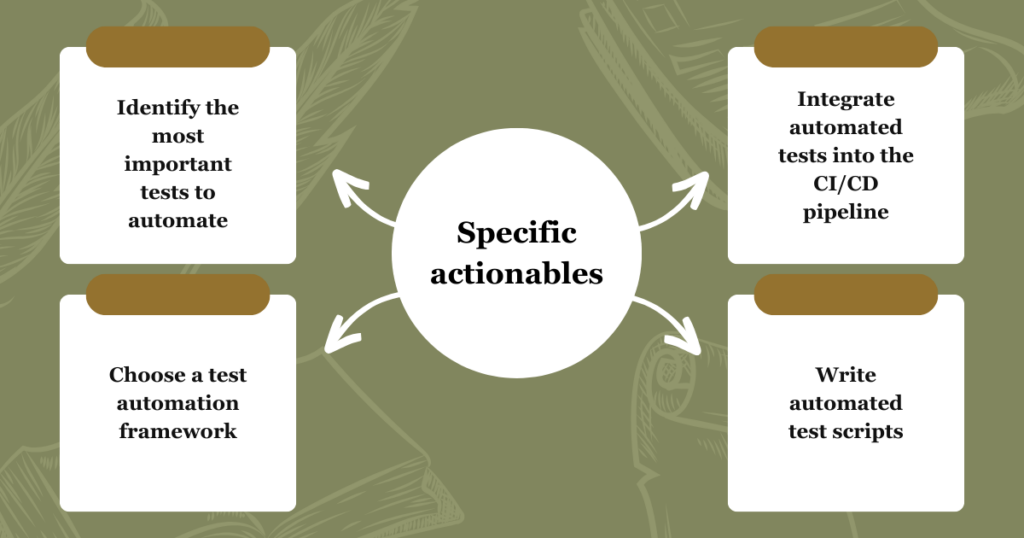Software developers and testers are constantly making changes to software applications, which can introduce new bugs or break existing functionality. This article will help you in Automate Regression Tests and End-to-End Tests for a More Reliable Software Product.
Regression testing is a type of software testing that helps to ensure that changes to an application do not introduce new bugs or break existing functionality.
Regression testing is typically performed after any change is made to the application's code, configuration, or environment. Regression testing can be performed manually or using automated testing tools.
Manual regression testing involves running a set of test cases manually to verify that the application still works as expected after a change.
Test automation regression testing uses software tools to run test cases automatically, which can save time and improve the efficiency of the regression testing process.
Regression testing is an important part of the software development life cycle (SDLC) and can help to improve the quality and reliability of software applications.
Automating full regression tests and end-to-end tests can help software teams to deliver more reliable software products. It can save time and money, improve test coverage, and reduce the risk of releasing buggy software.
Benefits of automating full regression tests and end-to-end tests

Improved test coverage:
Automated tests can be run more frequently and comprehensively than manual tests, which can help to identify and fix bugs earlier.
Reduced time and costs:
Automated tests can save time and money by reducing the need for manual testing.
Improved reliability:
Automated tests can help to improve the reliability of software products by ensuring that new changes or updates have not introduced any new bugs.
Reduced risk:
Automated tests can help to reduce the risk of releasing buggy software by identifying and fixing bugs early on.
How to automate regression tests and end-to-end tests
There are a number of different ways to automate full regression tests and end-to-end tests. One common approach is to use a test automation framework. Test automation frameworks provide a set of tools and libraries that can be used to create and execute automated tests.
Another common approach is to use a continuous integration and continuous delivery (CI/CD) pipeline. CI/CD pipelines automate the software development and delivery process, including testing.
Specific actionables

Here are some specific actionables that software teams can take to automate full regression tests and end-to-end tests:
- Identify the most important tests to automate: Not all tests need to be automated. Software teams should identify the most important tests to automate, such as critical functionality tests and regression tests.
- Choose a test automation framework: There are a number of different test automation frameworks available. Software teams should choose a framework that is appropriate for their needs and budget.
- Write automated test scripts: Once a test automation framework has been chosen, software teams can start writing automated test scripts. Test scripts should be well-written and easy to maintain.
- Integrate automated tests into the CI/CD pipeline: If possible, software teams should integrate their automated tests into their CI/CD pipeline. This will help to ensure that tests are run automatically after every code change.
Essential Considerations for Effective Test Automation Integration in Software Development
Test case prioritization:
When choosing which tests to automate, software teams should prioritize the most important tests. Some factors to consider when prioritizing tests include:
- The risk of the test failing
- The impact of the test failing
- The cost of automating the test
Test automation frameworks:
There are a number of different test automation frameworks available, each with its own strengths and weaknesses. Some popular test automation frameworks include:
- Selenium
- Katalon Studio
- Appium
Writing automated test scripts:
Automated test scripts should be well-written and easy to maintain. Some tips for writing good automated test scripts include:
- Use descriptive variable names
- Avoid using loops and conditional statements
- Break down complex tests into smaller, more manageable tests
Integrating automated tests into the CI/CD pipeline:
CI/CD pipelines are a great way to automate the software development and delivery process, including testing. To integrate automated tests into a CI/CD pipeline, software teams can use a continuous integration (CI) tool to trigger the execution of automated tests after every code change.
Book a Demo and experience ContextQA testing tool in action with a complimentary, no-obligation session tailored to your business needs.
Automation on the Rise for Software Testing
According to a recent survey by Capgemini, 69% of organizations are automating their regression testing. The same survey found that 58% of organizations are automating their end-to-end testing.
These statistics show that automation is becoming increasingly important for software testing. As software products become more complex, it is becoming increasingly difficult and expensive to test them manually. Automation can help software teams to overcome these challenges and deliver more reliable software products.
James Bach, author of Lessons Learned in Software Testing says, "Automation is not a silver bullet, but it can be a powerful tool for improving the quality of software. However, it is important to implement automation correctly. Otherwise, it can lead to more problems than it solves."
Automating full regression tests and end-to-end tests can help software teams to deliver more reliable software products. It can save time and money, improve test coverage, and reduce the risk of releasing buggy software.
You may also be interested in: Global Software Testing Tools Market to Grow at a CAGR of 21.71% During 2021-2027
Software teams should start by identifying the most important tests to automate. They should then choose a test automation framework that is appropriate for their needs and budget.
Once they have chosen a framework, they can start writing automated test scripts. Finally, they should integrate their automated tests into their CI/CD pipeline.
By following these steps, software teams can reap the benefits of automating full regression tests and end-to-end tests.
We make it easy to get started with ContextQA tool: Start Free Trial.
